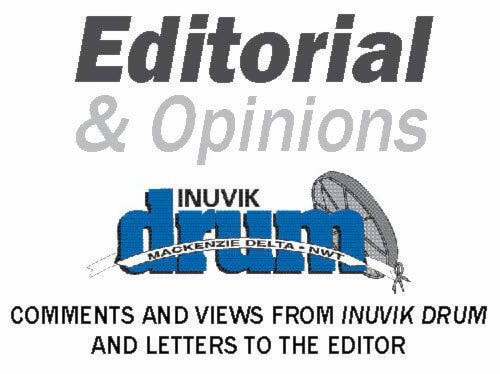Mayor Clarence Wood is drafting a letter to send to the GNWT’s Electoral Boundaries Commission asking them to not cut Inuvik’s meagre count of two MLAs in half.
It’s a response to an announcement by said commission they have completed their once-every-eight-years review of the current electoral boundaries and have come out with two completely optional suggestions — adjust the boundaries slightly or drop an MLA from Hay River, Yellowknife and Inuvik.
Should the second suggestion go forward, it would leave Yellowknife with six MLAs and the other two major population centres with one apiece. We would be left with a legislature of 16 MLAs, which would likely require a smaller cabinet to ensure non-cabinet run committees have enough members for a quorum. With current cabinet members each hold a minimum of three portfolios, that would leave a greater workload on each in a smaller cabinet.
Our current legislative body doesn’t have enough elected officials to cover the workload before them. Expecting someone to work three or more jobs on a 24/7 basis and do any one of them with any level of competence is completely unrealistic — these are people, not androids. With such split focus, certainly much of cabinet’s workload is being carried by staff who know their portfolios far better. And the results of this speak for themselves — I have been a news reporter for nearly seven years and I have never seen MLAs and bureaucrats clash as frequently or as outrageously as I have up here.
Since the suggestions put forward by the commission are just that — there is no requirement to change the system at all — might I suggest we examine the opposite of the reducing MLAs suggestion and speculate on what would happen if we have more MLAs?
First, the obvious catch — paying MLAs and their staff costs money, which would either require higher revenues from taxes or more money from the federal government. So bear that in mind with this thought experiment.
There are currently 21 cabinet positions, not including the Covid-19 secretariat and deputy premier positions. Ideally, at most any one person should be overseeing is two, so keeping with the above financial logic in mind to balance a cabinet of 10 ministers, including the premier, would be an increase of three MLAs. To counter this, we would want to see at least as much of an increase across the floor, but let’s aim for a two-to-one ratio of cabinet to regular MLAs. So we would be adding a total of nine seats to the legislature.
Not only would this would allow not only for more focused portfolios, but also would allow the regular MLAs to be more effective at their jobs as well. The current legislature opted to have a more modest list of priorities than previous ones to ensure the limited number of MLAs could focus on key issues. This is a smart use of current resource-pool of up-to-11 MLAs, but add another six and the extent of what they could analyze, recommend and improve grows exponentially.
As mentioned above, this requires significant increases in the legislature’s budget and staffing. But so long as we’re expecting our MLAs to do three jobs at once, we’ll get what we pay for.
